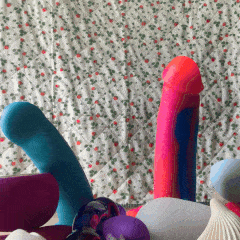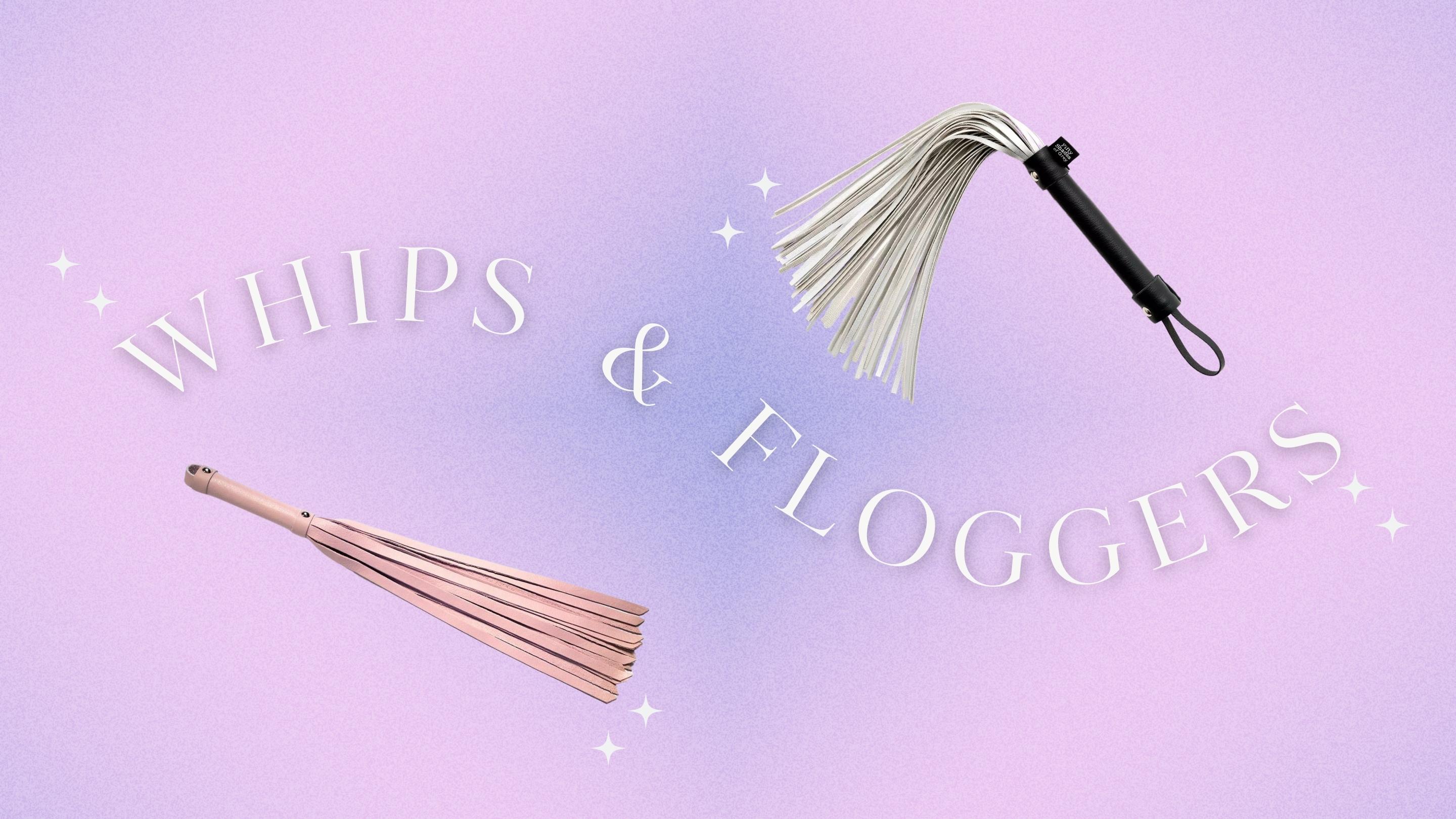
The idea of trailing a flogger across your lover’s skin and then ending with a quick flick of the wrist is a pretty sexy one, right?
But, that doesn’t mean it’s not a bit intimidating, too…
Worry not!
In this guide, we’ll go over everything you need to know about how to buy a flogger or BDSM whip for the first time (are they even the same thing?).
I will also take you through how to get started using a flogger, and how to be safe while doing it.
What’s the Difference Between a Whip and a Flogger?
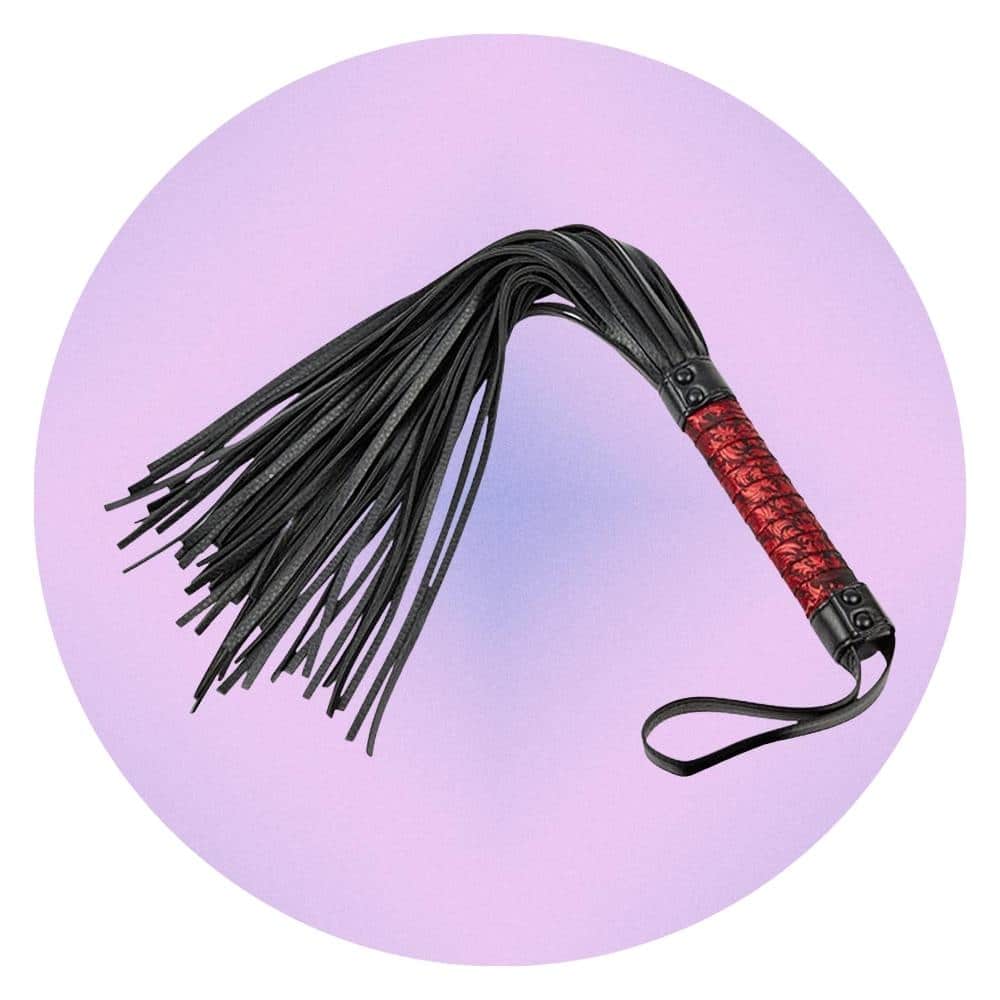
In the worlds of kink and BDSM, a whip and a flogger are two different types of tools used for impact play. However, when it comes to buying them, they’re actually often used interchangeably.
In general, a flogger:
- Has more falls (or ‘tails’)
- Is shorter
- Has more versatility in how it can be used
- Can be a great beginner tool for impact play
A whip, on the other hand:
- Can often have just one fall
- May be bigger or longer than a flogger
- Is suitable for more advanced users
Thuddy vs Sting-y Impacts
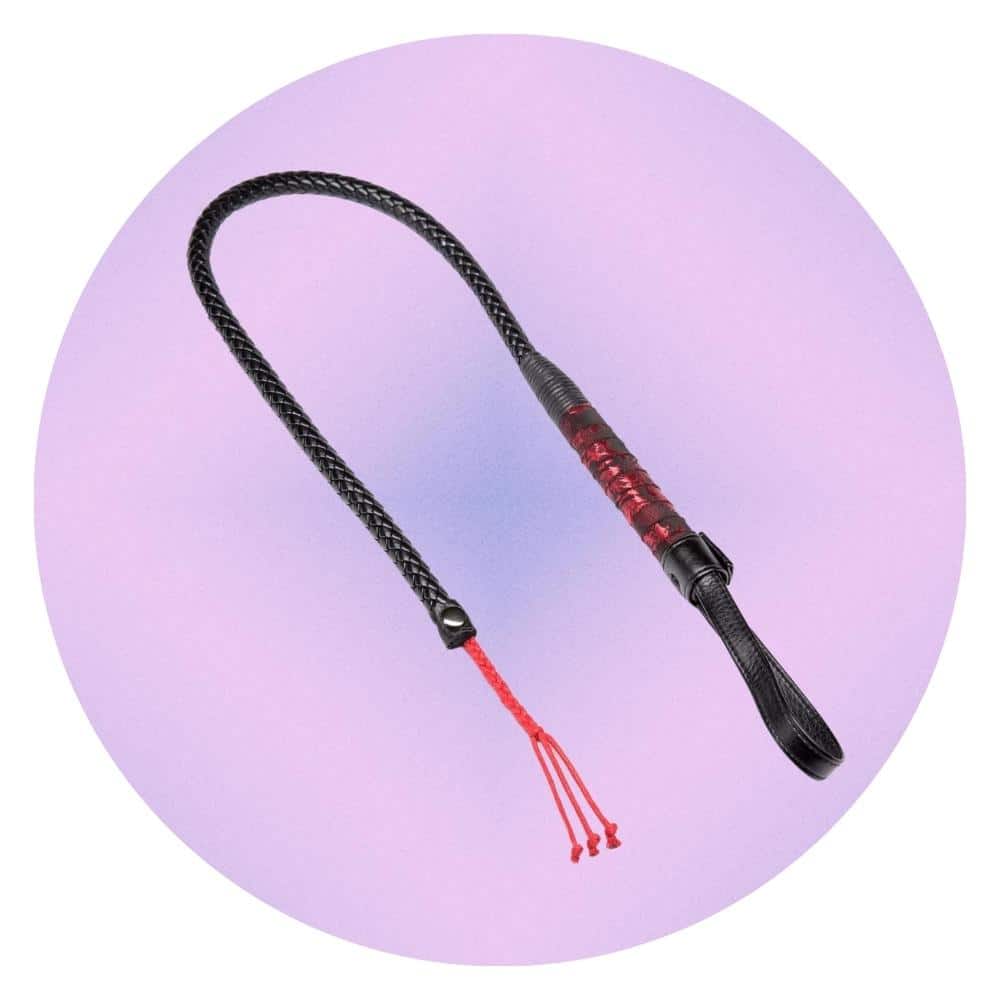
When we describe how different impacts feel, we often use the terms ‘thuddy’ and ‘stingy’. These describe how they feel on our skin and in the body.
Thuddier impacts are made with wider falls and hit a larger area of your body to produce a ‘thud’-like sensation.
On the other hand, floggers or whips with thinner, stiffer produce a sting rather than a thud.
Think about the sting of getting whipped with a dish towel as opposed to the thud of being hit with a rolled-up newspaper.
Different right?
Different Ways to Use Whips and Floggers
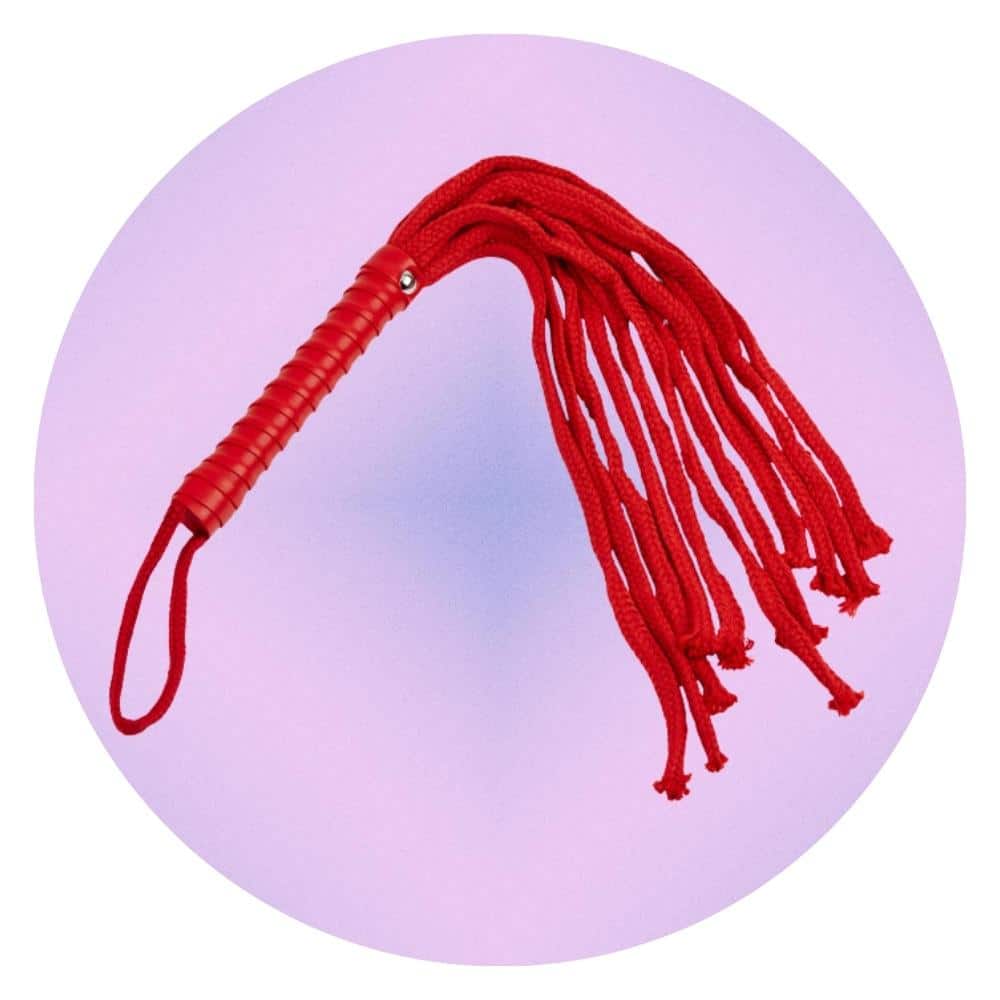
First, some basic beginner technique.
If you and your partner have never tried out impact play before, then you may want to start out extra slow.
Even those who have done some spanking or used a spanking paddle before may want to avoid going straight in with a flogger.
Instead, try out some long strokes over the body first to get both of you warmed up and used to the sensation.
As a bonus, this also builds a ton of sexy anticipation!
If you’re both comfortable, you can then move on to some light strokes with a beginner-friendly flogger on a meaty area of the body, like the butt.
Wait at least 3 seconds before each stroke to give the floggee some time to decide if they like the sensation and your technique.
Once you’ve found your groove, there are a few things you can potentially experiment with:
- Try out some harder strokes once you’re comfortable with your technique and aim. Stick to fleshy areas of the body (and check out the section below on areas to avoid)!
- Look at getting a heavier or more stingy flogger or whip. Talk to your partner and ask if they would prefer some different sensations, and then head over to our reviews of the best!
- Experiment with cyclic strokes. This is where each stroke flows into the next stroke, rather than pausing between strokes.
- Add some more fun to the mix! Try out some light bondage and have your floggee wear a blindfold, or restrain their limbs until they’re begging for more.
For more details on exactly what to do with your flogger, as well as details on different techniques, I recommend watching this video. It’s very detailed, and you may get a couple of laughs out of it, too…
Where Should I Hit?
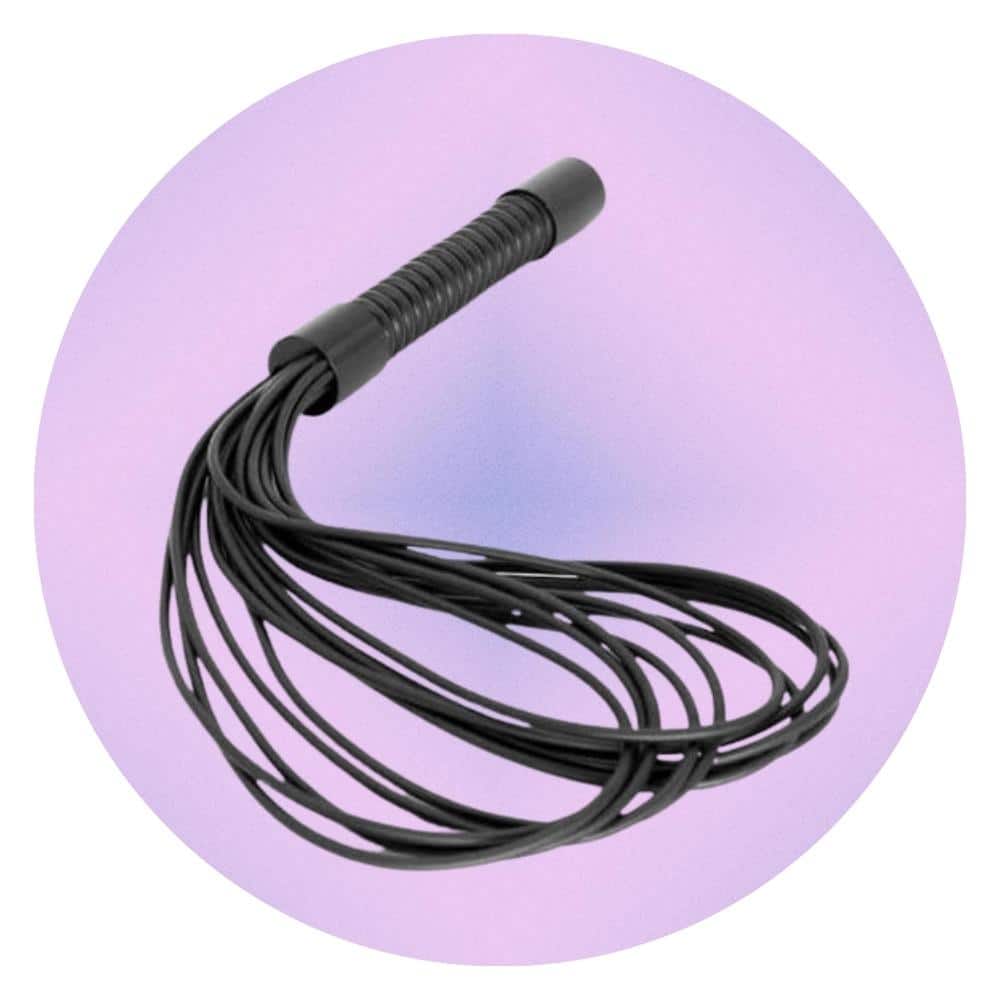
When it comes to whips and floggers, the placement of your strokes is everything!
In general, you should always try to stick to meaty areas of the body. Most people go for the buttocks, but the thighs are also a good option.
Other areas aren’t totally off-limits, but they require a light touch.
Treat areas of the body like the lower legs, breasts, arms, genitals, ribs and back very carefully. You should only use very light strokes for them.
If you have a more advanced whip, I recommend steering clear of these areas all together.
Areas to avoid completely?
The face, hands and feet, kidney area, spine and coccyx.
You should also avoid touching any skin that is healing, as it’s extra delicate and sensitive.
One more thing to keep in mind: it’s important that the flogger or whip doesn’t wrap around the body when you use it. When this happens, the tips of the falls accelerate a lot and can end up being very painful — an unexpected and unpleasant surprise for your floggee!
The best way to avoid it is to make sure you’re far enough away from your partner and that your stroke technique is correct.
You can practice the accuracy of your strokes by striking a pillow wrapped in a towel, your sofa or something else that’s soft with a bit of texture.
Then, you can make sure you’ll avoid any painful mistakes later.
BDSM Safety and Aftercare
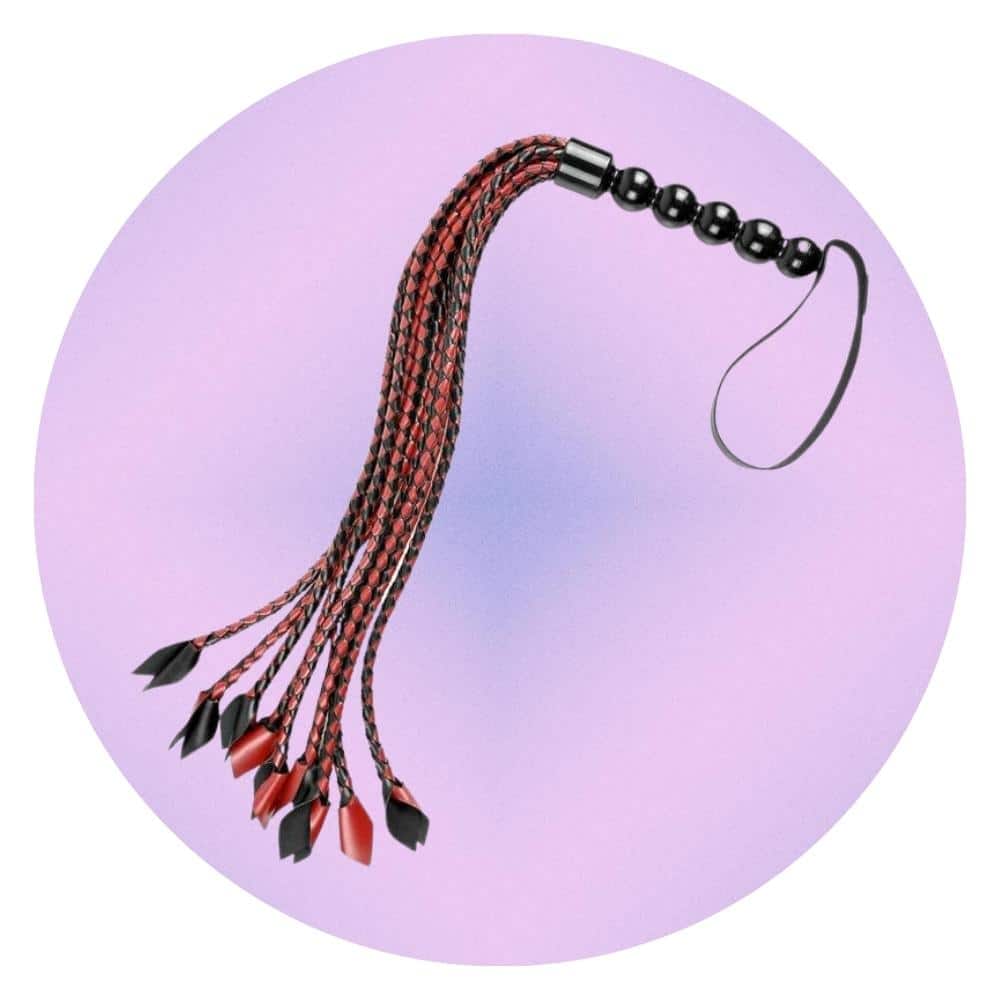
Just like any other kink play, it’s vitally important that you keep safety in mind. With impact play, it’s even more important — you’re literally hitting someone, after all.
Before you buy or do anything, make sure both of you are on board with the idea of impact play. Have an open and honest conversation (or, ideally several conversations) about what you’re both comfortable with and interested in.
It’s okay if you have questions or reservations about certain aspects, but both parties must be on board with trying it out.
If you’ve agreed on trying out a flogger or whip, you should also establish a safeword or cue together. This is something that floggee can say or do that will immediately stop the scene, no questions asked.
Preferably, it should be something that would otherwise be very out of place in the bedroom, like “Broccoli!”. Then, you won’t get it confused for any role-playing.
Alternatively, try out the traffic light system. This is a way for the floggee to have some control over the scene based on their comfort levels, and can be a good idea for beginners who are learning their limits. The system can look something like this:
- “Green” means ‘it feels great, keep going’
- “Yellow” means ‘tone things down’, ‘do some lighter strokes’, or ‘strike less frequently’
- “Red” means ‘stop right now’
Make sure you both agree on what each term will mean before you start.
After your sexy flogging session, don’t forget to practice some good aftercare.
BDSM can be both physically and emotionally draining, and you’ll both need some time to recover.
Rub lotion on the floggee’s skin, snuggle, and have something to eat and drink.
You should also check in with each other after every session to make sure you’re both happy with what went down.
Buyer’s Guide to Whips and Floggers
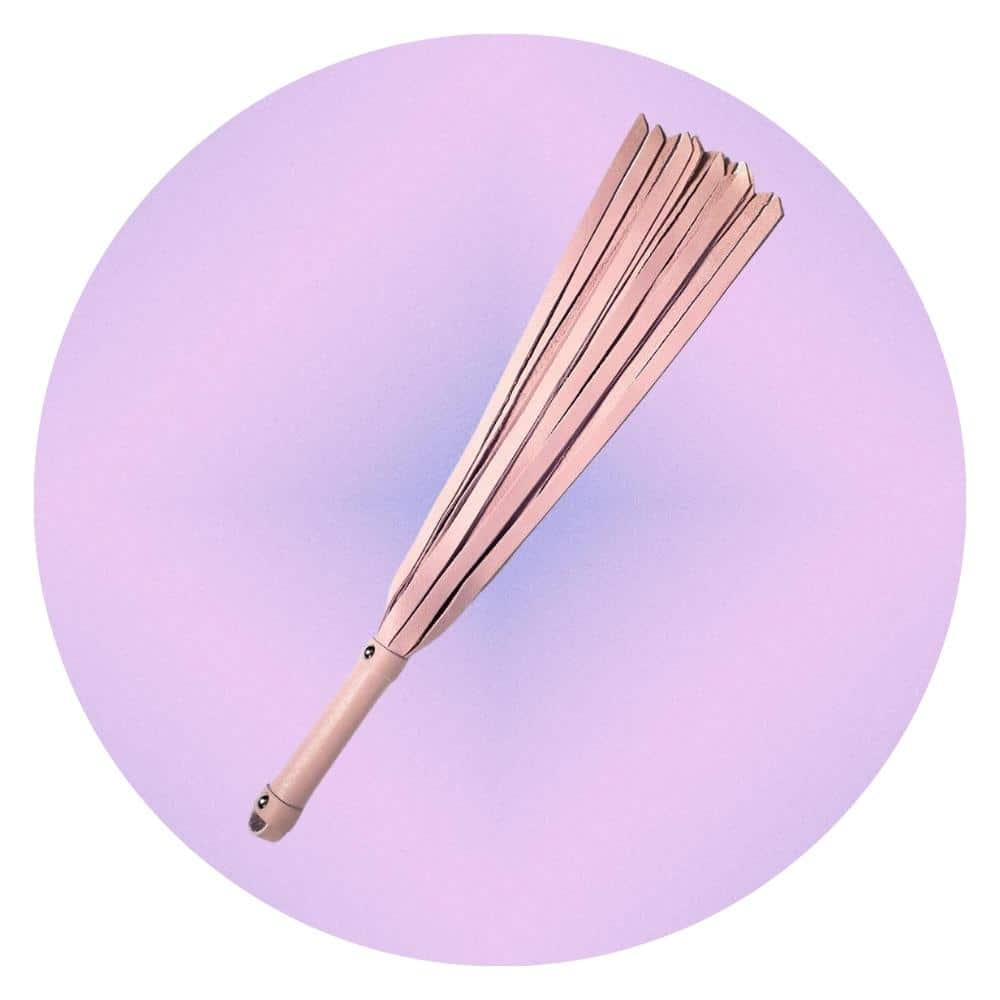
If you’re a beginner looking to buy your first flogger, here are some things to keep in mind while you’re shopping around:
- Number of falls — a good beginner flogger usually has between 20 to 30 falls. More will probably be too heavy, and less may be unwieldy or feel overly stingy.
- Materials — Suede is extremely soft and works great for warming up and harder impacts. Soft leather or faux leather are also flexible enough to be beginner-friendly.
- Weight — you should opt for a light to medium weight flogger. Most stores will have this information in their product description.
- Length — a good length to aim for is between 18-24 inches. You’ll be fairly close to your partner for intimate flogging, and will have greater control over your aim and power.
- Extras — it can be helpful to have a flogger that has a loop on the handle for your wrist to go through. That way, you’ll avoid it accidentally flying across the room mid-swing!
